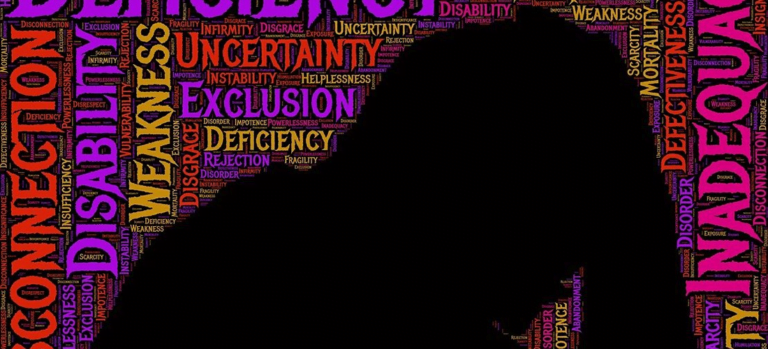Every day, we’re faced with countless decisions, each one subtly shaping the trajectory of our lives. But have you ever considered the role of solitude in this process? Let’s explore how to harness decision-making in alone time. When we’re alone, we can delve deep into our thoughts, free from the noise of external influences. This quiet introspection can provide us with profound insights that inspire more conscious, goal-aligned choices.
Decision-making plays a pivotal role in shaping the course of our daily lives. Every choice, no matter how seemingly insignificant, steers us on a path leading to a specific outcome. This means that each decision, from what we choose to eat for breakfast, to significant life-altering choices like career paths or relationships, sets in motion a ripple effect of events.
Alone time can serve as a powerful catalyst in enhancing this decision-making process. When we’re alone, free from distractions and external influences, we can delve deeper into our thoughts and emotions. We can reflect on our past choices, consider the present, and envision potential future outcomes. This solitary contemplation provides us with valuable insights and clarity, enabling us to make more informed, conscious decisions that align with our personal goals and values.
The Benefits of Alone Time for Decision-Making
1. Solitude as a Tool for Self-Reflection
Solitude serves as a powerful tool for self-reflection, allowing us to take a step back and assess our thoughts and feelings in a calm, distraction-free environment. This introspective state is especially beneficial when it comes to decision-making.
Without the constant stream of external input and opinions, we are better able to listen to our inner voices and understand our true desires and inclinations. Self-reflection in solitude gives us the space to ponder our past decisions, analyze their outcomes, and learn from them.
We can contemplate the present, understand the factors influencing our current choices, and explore potential future paths. This thought process can lead to more deliberate, purposeful decision-making, ultimately steering us towards choices that align more closely with our core values and long-term goals.
2. Reducing External Distractions and Noise
Our decision-making process is often influenced or even overshadowed by a cacophony of external distractions and noise. This noise comes in various forms – unsolicited advice, societal expectations, or even the omnipresent digital media noise. Alone time offers us an invaluable respite from these distractions, creating a quiet haven where our own thoughts and feelings can take center stage.
In this serene environment, we can focus on the task at hand without interruption, giving our full attention to the decision-making process. It becomes easier to identify and sift through the essential information, eliminating unnecessary and confusing noise.
As a result, our decisions become less reactive and more thoughtful, rooted in deep understanding rather than surface-level influences. This focused solitude can be a game-changer in improving the quality of our decisions, leading us onto paths that truly resonate with who we are and what we aspire to be.
3. Enhancing Focus and Concentration
Alone time is conducive to enhancing our focus and concentration, which are pivotal elements in effective decision-making. When we’re alone, the absence of external distractions allows our mind to concentrate fully on the task at hand.
This unfettered focus can significantly augment our ability to analyze complex problems, evaluate potential solutions, and make decisions with greater clarity and confidence. It encourages a deeper immersion in our thoughts, promoting careful consideration of each aspect of the decision.
Solitude can foster a state of ‘flow’, wherein we become so engrossed in our thoughts and ideas that we lose track of time, facilitating profound insights and innovative solutions. Hence, alone time can prove to be a powerful tool in bolstering our concentration and focus, thereby enhancing the quality of our decision-making process.
4. Cultivating Self-Awareness
An often overlooked, yet critical factor in decision-making, is self-awareness. The solitude in alone time provides us with the perfect opportunity to cultivate this valuable trait. When we’re alone, we’re not just free from external distractions, we’re also presented with an uninterrupted view of our own thoughts, emotions, and reactions. This introspective view can lead to a deeper understanding of our motivations, preferences, and values, which are all key factors in decision-making.
As we spend more time with ourselves, we become more acquainted with our strengths and weaknesses, our desires, and our dislikes. This heightened self-awareness aids us in making decisions that are more aligned with our true selves, rather than being influenced by external factors or fleeting emotions.
The decisions we make in this state of self-awareness tend to be those that we are more satisfied with in the long term, contributing significantly to our overall happiness and fulfillment. Thus, cultivating self-awareness through alone time is an essential practice for effective decision-making.
Creating the Ideal Alone Time Environment
1. Choosing the Right Setting
Choosing the correct setting for your alone time is integral to the process. This environment should be a place where you feel relaxed, comfortable, and free from interruptions. The ideal setting will differ for everyone; some may prefer the tranquility of a quiet room in their home, while others might find solace in nature, like a park or a garden.
If you’re in an urban area, consider seeking out quiet corners in libraries or coffee shops. The key is identifying a space where you feel at ease and undisturbed. The goal of alone time is to create an environment conducive to introspection and reflection, so choose your setting with these objectives in mind. Over time, you’ll come to associate this space with self-reflection and decision-making, making the process feel more instinctive and natural.
2. Scheduling Alone Time in Your Routine
Incorporating alone time into your routine is paramount to enhancing your decision-making processes. Start by designating specific periods in your day for solitude. This could be early in the morning before the day’s hustle begins or late in the evening when everything has quieted down.
Consistency is key in this practice. By scheduling regular intervals for alone time, you accustom your mind to this rhythm and can better tap into introspection and reflection during these periods. It’s important, however, not to view this as another tick on your to-do list. Instead, consider it a necessary self-care activity that aids in improving your mental clarity and decision-making abilities.
Remember, the duration of alone time can vary according to your preferences and schedule. Even 15-30 minutes spent in mindful solitude can have a significant positive impact. Over time, as you start experiencing the benefits, you can gradually increase the duration. The goal is to make alone time a habitual part of your routine, thereby fostering better decision-making in your life.
3. Setting Boundaries with Others
Setting boundaries with others is an essential step in protecting your alone time and empowering your decision-making abilities. This involves openly communicating your need for solitude to your family, friends, and colleagues. Explain to them that this time is critical for your mental well-being and clarity of thought, and request their understanding and support.
You may need to establish specific ground rules, such as not being disturbed during your alone time unless in case of an emergency. This can be challenging, especially in a busy household or a demanding workplace, but it’s crucial to stand firm in your commitment to this practice.
Setting boundaries doesn’t mean isolating yourself from others. It means honoring your need for personal space to reflect and make decisions. It’s about balancing your social interactions with periods of solitude, thereby improving your overall decision-making in alone time. Implementing these boundaries can result in a more focused, peaceful, and productive alone time, ultimately contributing to enhanced decision-making.
4. Eliminating Digital Distractions
Our modern world is filled with digital distractions that can often impede our ability to focus and make decisions during alone time. It’s essential to create a digital-free zone during these periods. This means turning off your mobile devices or, at least, silencing any non-essential notifications. It’s also beneficial to stay away from addictive digital platforms like social media, email, and news websites, which can easily consume your alone time and scatter your focus.
Consider using tools and apps that encourage productivity and limit digital distractions. For example, apps that block distracting websites for a specific period, or tools that track your internet use and provide a visual representation of your digital habits. Using these tools not only helps you manage your digital distractions but also raises your awareness of how much time you spend online.
Eliminating digital distractions is not about completely cutting yourself off from the digital world. It’s about taking control of your digital consumption, ensuring it doesn’t interfere with your alone time dedicated to reflection and decision-making. By doing this, you create a more conducive environment for effective decision-making in your alone time.
Techniques to Enhance Decision-Making in Alone Time
1. Mindfulness and Meditation
Mindfulness and meditation can play a pivotal role in improving decision-making during alone time. By training your mind to focus on the present moment, mindfulness allows you to detach from the noise of everyday life, providing mental clarity and emotional calmness. This state of mental tranquility can enhance your decision-making abilities by reducing impulsive reactions and promoting more thoughtful, considered responses.
Simple mindfulness exercises can be incorporated into your alone time to foster this focus and clarity. One effective method is the practice of mindful breathing. This involves sitting comfortably, closing your eyes, and focusing your attention on your breath as it enters and leaves your body. When thoughts arise, simply acknowledge them without judgment and gently bring your focus back to your breath.
Another mindfulness technique is the body scan exercise. In a comfortable position, close your eyes and mentally scan your body from head to toe, noting any sensations, tensions, or discomfort. This practice not only fosters mindfulness but also promotes a stronger mind-body connection, which can support better decision-making.
By incorporating these simple mindfulness exercises into your alone time, you can create a mental environment conducive to effective, deliberate decision-making. Through consistent practice, mindfulness and meditation can become powerful tools for enhancing your decision-making abilities.
2. Journaling
Journaling is another potent tool for refining decision-making in alone time, serving as a release valve for thoughts and feelings. By translating internal discourse into written words, you can gain a better perspective on your emotions, ideas, and dilemmas. The act of writing helps to structure your thoughts, making them clearer and more understandable. This clarity can be highly beneficial for decision-making, providing you with a visual representation of your options and their potential consequences.
Here are some reflective journaling prompts to help you get started:
- What is the biggest decision I’m currently facing? List all the possible outcomes and how each makes you feel.
- Describe a recent situation where you had difficulty making a decision. What were the factors that contributed to the difficulty?
- Think of a decision you made in the past that you now regret. What did you learn from this experience, and how can you apply this lesson in future decisions?
- Imagine where you want to be in five years. What decisions can you make today that will set you on that path?
- How do your core values influence your decision-making process? Give specific examples.
- Write a letter to your future self, advising on the decisions you are currently facing.
These prompts can serve as starting points for your journaling sessions, helping you analyze your decision-making processes and identify any patterns or biases. By regularly writing in this way, you can develop a deeper understanding of your decision-making patterns, empowering you to make more informed choices in the future.
3. Self-Assessment and Goal Setting
When it comes to decision-making, one of the most significant factors involves understanding your values and priorities. Your values are the principles you hold dear, and they guide your actions and decisions. Reflecting on your values and aligning them with your decisions ensures that you lead a more fulfilling and authentic life.
Consider writing down your top values, such as honesty, respect, or growth, and evaluate how they influence your decisions. Moreover, understanding your priorities helps you make decisions that are not only good for the present but also beneficial for your future.
Setting SMART (Specific, Measurable, Achievable, Relevant, Time-bound) goals can significantly improve your decision-making process. This management technique allows you to clearly define your goals, making them easier to achieve.
For instance, if you are deciding on a career path, a SMART goal might look like this: “In the next five years, I want to become a senior software engineer in a tech company, acquiring necessary skills through regular training and striving for promotions at my current job.”
By setting SMART goals, you make your choices more focused, thereby reducing the chances of distraction and misjudgment. It’s important to review and adjust these goals as you progress and circumstances change.
4. Visualization and Mental Simulation
Visualizing Potential Outcomes and Consequences
Visualizing the potential outcomes of your decisions can play an instrumental role in improving your decision-making skills. This practice involves mentally exploring different scenarios that might result from each of your potential choices. By doing so, you are able to evaluate, in a detailed manner, the potential benefits and repercussions of each decision, thereby allowing you to make more informed and rational choices.
For example, if you’re considering a job offer, envision how accepting or rejecting it might impact your life. Think about the new skills you might acquire, the relationships you could build, or the opportunities you might miss out on. Reflect on how each scenario aligns with your values and long-term goals.
Techniques for Mental Simulation
There are several techniques that can enhance your mental simulation process:
- Guided Imagery: This technique involves creating detailed mental images of various outcomes. It can help to close your eyes and really imagine the sights, sounds, and feelings associated with each potential scenario.
- Meditation: Practicing mindfulness meditation can improve your ability to focus on your mental simulations. By calming your mind and eliminating distractions, you can more effectively visualize the potential outcomes of your decisions.
- Journaling: Writing down your mental simulations can help to solidify them in your mind, and allows you to refer back to them later. This can be particularly helpful when dealing with complex decisions involving multiple potential outcomes.
- Pros and Cons Lists: While not a mental simulation technique per se, creating pros and cons lists for each potential decision can greatly assist in the visualization process, as it provides a clear, organized overview of the potential outcomes.
- Role Playing: This can be particularly useful when your decision involves other people. Role playing different scenarios can help you to better understand others’ perspectives, and anticipate their reactions to your decisions.
The process of mental simulation is not about predicting the future with 100% accuracy, but rather about preparing yourself for a variety of potential outcomes. This way, you’ll be better equipped to handle whatever comes your way.
The Role of Information Gathering
Research and Analysis in Alone Time
In the solitude of alone time, research and analysis can become powerful tools for decision-making. With no interruptions or distractions, you can delve deeply into the details, examining every facet of the issue at hand.
This could involve researching online, reading relevant books or studies, analyzing data or financial reports, or even reflecting on personal experiences or observations. Through careful and thorough research, you gain a comprehensive understanding of the situation, which is crucial in making informed decisions.
Similarly, the process of analyzing your findings allows you to draw insightful conclusions, discern patterns, and identify potential challenges or opportunities. Consequently, the time spent alone in research and analysis can significantly enhance your decision-making capabilities.
Avoiding Information Overload
While information gathering is critical to making well-informed decisions, it’s equally important to avoid information overload. In our digital age, we are often bombarded with an abundance of information, which can lead to confusion, stress, and ultimately, paralysis in decision-making.
During your alone time, establish boundaries for your research. Set a specific time frame, and resist the temptation to dig deeper than necessary. Remember, the goal is not to know everything, but to understand enough to make a sound decision.
Prioritize quality over quantity. It’s always better to understand a few reliable sources deeply than to skim through numerous superficial ones. As you navigate through the information, consistently filter and evaluate the relevance and credibility of the sources.
Avoiding information overload is about striking a balance. It’s about gathering sufficient data to inform your decision, but not so much that it overwhelms you and impairs your decision-making ability.
The Importance of Seeking Diverse Perspectives
Seeking diverse perspectives is another key aspect of enhancing decision-making during your alone time. Having a variety of viewpoints can broaden your understanding and offer insightful ways to approach a problem.
This strategy is not about seeking agreement, but rather about expanding your frame of reference. By hearing different opinions, you expose yourself to new ideas that you may not have considered otherwise.
But how do you obtain these diverse perspectives during your alone time? This could be through reading diverse literature, listening to podcasts, or watching online talks and presentations. You might also consider reaching out to people with differing viewpoints through digital means such as email or social media.
The objective here is not to replace your own thoughts, but rather to enrich them and provide a solid foundation for making well-rounded decisions. Remember, a decision informed by multiple perspectives is often more robust and comprehensive.
The Decision-Making Process
1. Defining the Problem or Decision to be Made
The first step in the decision-making process during your alone time is defining the problem or decision to be made. It is crucial to understand the exact nature of the decision that needs to be made.
This involves identifying the problem, acknowledging its existence, and articulating it clearly and concisely. Often, we find ourselves overwhelmed not because the decision is complex, but because we haven’t defined the problem adequately.
To do this effectively, ask yourself what the issue is, why it is a problem, and what the consequences of not addressing it might be. Reflect on whether the issue is within your control, and if so, what the possible solutions could be. A well-defined problem often paves the way for a well-structured decision-making process.
2. Generating and Evaluating Options
Once you’ve clearly defined your problem, the next step in the decision-making process is to generate possible options. During your alone time, use this opportunity to brainstorm without judgement or constraints.
Consider all potential solutions, even those that at first might seem outlandish or unattainable. This process is about quantity, not quality. It’s about allowing your mind the freedom to explore every possible avenue.
After generating a list of potential options, the next step is to evaluate them. Consider the pros and cons, the feasibility, and the potential impact of each option. Reflect on the values and goals that each option aligns with and how it might affect you and others involved.
This evaluation process is crucial in narrowing down your options and it helps to illuminate the potential outcomes of your decision. During this evaluation, the objective is to allow your thoughts to flow freely, consider differing perspectives, and reflect on the potential implications of each option.
It’s your alone time, so take the necessary time to thoroughly explore each option before making your decision.
3. Balancing Intuition and Rational Analysis
In the decision-making process, finding a balance between intuition and rational analysis is key. Intuition, often influenced by past experiences, can provide immediate understanding or knowledge without the need for conscious thought. It’s a gut feeling, an instinct, something you just ‘know’. On the other hand, rational analysis involves conscious thought, reasoning, and evaluation. It is based on facts and logical thinking.
While alone, it’s easier to tune into your intuition without external influences. Paying attention to these intuitive insights can provide powerful guidance. However, it’s essential not to overlook the importance of rational analysis, especially for more complex decisions.
Review the facts, weigh the pros and cons, and consider the potential implications. But also listen to your gut and what it’s trying to tell you. Balancing these two aspects, intuition and rational analysis, can lead to more holistic and effective decision-making. By doing so, you can make the most of your alone time in making well-rounded decisions.
4. Making and Implementing Decisions
Once you’ve balanced intuition and rational analysis, the next step in alone-time decision-making is making and implementing the decision. This step requires courage and commitment. You’ve taken the time to explore every angle of the problem, considered the repercussions of each potential route, and listened to your intuition. Now it’s time to choose.
During alone time, you have the advantageous position of not being pressured by external influences. You can make decisions at your own pace and in your own time. Once you’ve made your decision, it’s important to act on it.
Implementation requires planning and determination, but remember, even small steps towards your goal matter. Not every decision will lead to immediate change, but each one will set a new course that will gradually alter your path.
Use your alone time to not only make decisions but also to create a plan of action for implementing them. This way, you’re utilizing your solo time effectively for holistic decision-making and taking the steps necessary to bring those decisions to fruition.
Overcoming Common Challenges
1. Dealing with Self-Doubt and Overthinking
Self-doubt and overthinking are common challenges that can hinder decision-making, especially during alone time. It’s easy to fall into a cycle of questioning yourself and your choices when you’re solely responsible for the decisions you make. The first step in dealing with these challenges is to acknowledge them. Recognize when you’re doubting yourself or overanalyzing a situation, as awareness is the first step to change.
When it comes to self-doubt, try to identify the root of your insecurities. Are they based on past experiences, fear of failure, or perhaps the high expectations you set for yourself? Once you understand where your doubt comes from, you can start to confront it. Remember that everyone makes mistakes and that they are an essential part of learning and growth. You’re more capable than you give yourself credit for, and it’s important to trust in your abilities.
Overthinking, on the other hand, often stems from the fear of making the wrong decision. It’s crucial to understand that there’s rarely a perfect choice in any situation. Every decision will have potential upsides and downsides. The key is to make the best decision you can, given the information and resources you have at your disposal. You can always adjust your course if necessary.
In the end, managing self-doubt and overthinking comes down to trust and acceptance — trust in your abilities and acceptance of imperfection. Remember, the goal isn’t to make perfect decisions but to make informed ones and learn from the process. Don’t let these challenges paralyze you. Use your alone time to confront them head-on, enhancing your decision-making abilities and growing as an individual.
2. Managing Fear of Missing Out (FOMO)
Another challenge to decision-making in alone time is managing the fear of missing out, or FOMO. This is a pervasive apprehension that others might be having rewarding experiences from which you are absent. It’s often exacerbated by the highlight reels we see on social media, where everyone else’s lives seem to be filled with excitement and achievement.
Dealing with FOMO involves a conscious shift in perspective. Remind yourself that social media often displays a curated and idealized version of people’s lives and is not a genuine reflection of their overall experience. It’s important to focus on your own journey, your goals, and your achievements. Acknowledge the value in the experiences you choose and the decisions you make.
Another strategy to manage FOMO is to practice gratitude. Recognize and appreciate what you have and the choices you’ve made. This shift in thinking helps to mitigate the feelings of FOMO and allows you to make decisions based on what truly matters to you, rather than what you perceive you’re missing out on.
Alone time is a valuable opportunity to reflect, learn, and make decisions that align with your personal goals. It’s okay to say no to things that don’t serve your purpose or values. Ultimately, making peace with FOMO allows you to trust your decisions and make the most of your alone time.
3. Coping with the Fear of Making Mistakes
Fear of making mistakes is a common hurdle many face when making decisions during alone time. This fear often stems from a desire for perfection or a fear of judgment and can deter you from making critical decisions. However, it’s crucial to remember that mistakes are a part of the learning process and can lead to growth and improvement.
To cope with this fear, adopt a growth mindset. Rather than viewing mistakes as failures, perceive them as opportunities for growth and learning. This attitude can empower you to take risks and make decisions without the paralyzing fear of getting it wrong.
Additionally, self-compassion is an essential tool in managing this fear. Treat yourself as you would a friend, with understanding and kindness, when mistakes happen. This strategy can help you navigate through difficult decisions without the added pressure of being perfect.
Lastly, practice mindfulness. Being present in the moment allows you to make decisions based on current circumstances rather than potential future mistakes. By focusing your attention on the now, you can make informed decisions without the cloud of fear.
Coping with the fear of making mistakes requires a shift in perspective: embracing mistakes as a path to growth, practicing self-compassion, and being mindful.
Conclusion
Experiencing alone time can significantly improve decision-making. Firstly, it diminishes the Fear of Missing Out (FOMO), which often impairs our decision-making process. By accepting the inevitability of lost opportunities, we create room for choices that truly align with our values and goals. Secondly, alone time helps in coping with the fear of making mistakes. Adopting a growth mindset, practicing self-compassion, and staying mindful are instrumental in this process. These practices allow us to view our mistakes as learning opportunities, treat ourselves kindly when we falter, and remain present in the moment, respectively. Therefore, alone time not only enhances our decision-making skills but also contributes to personal growth and self-improvement.












